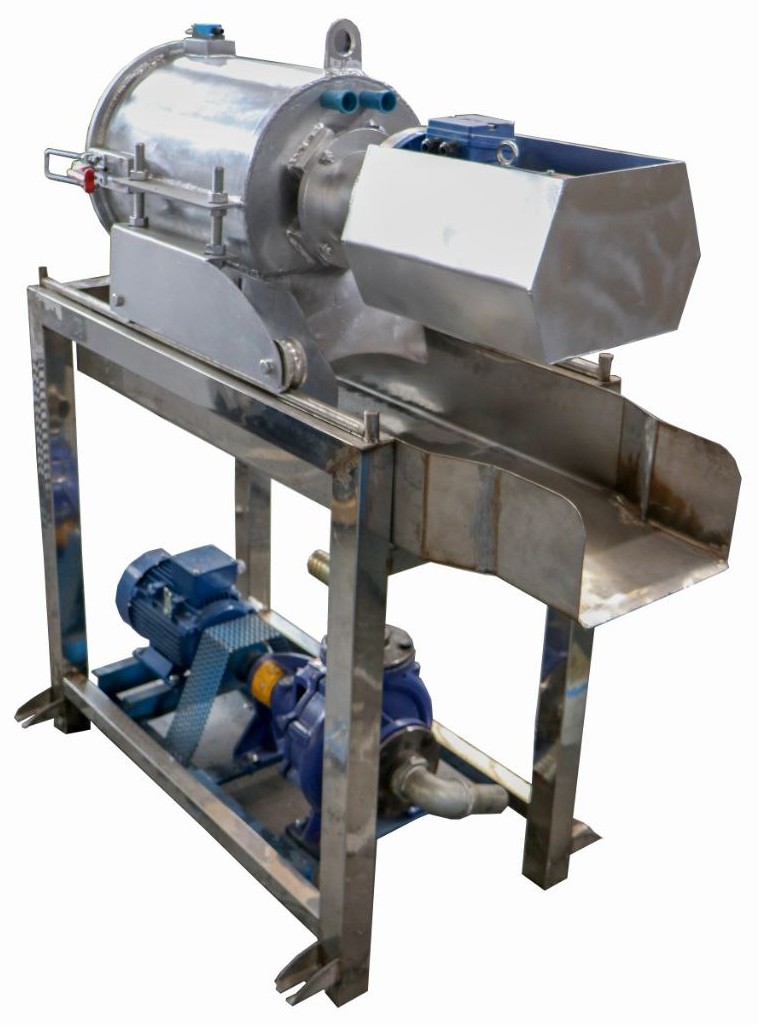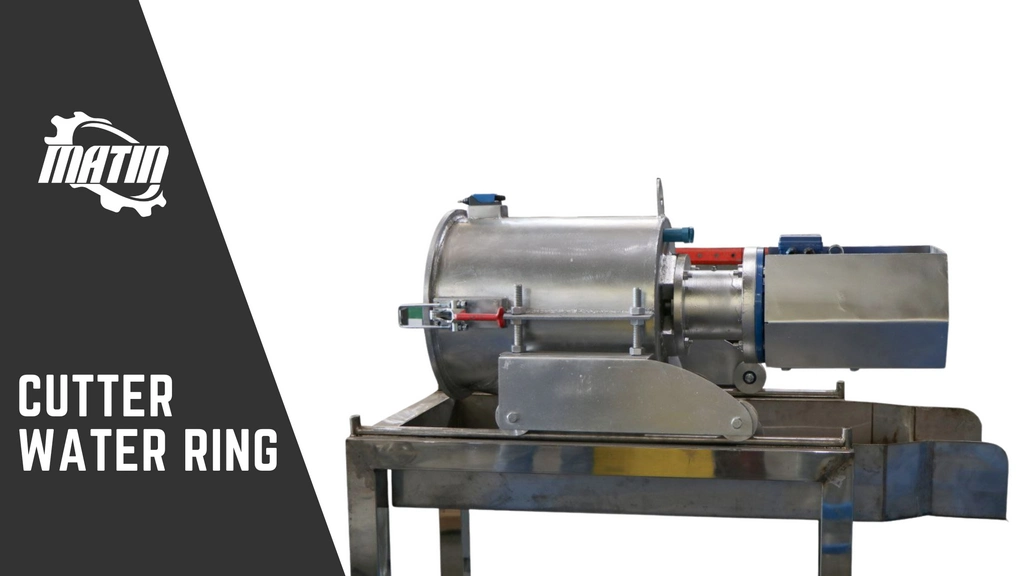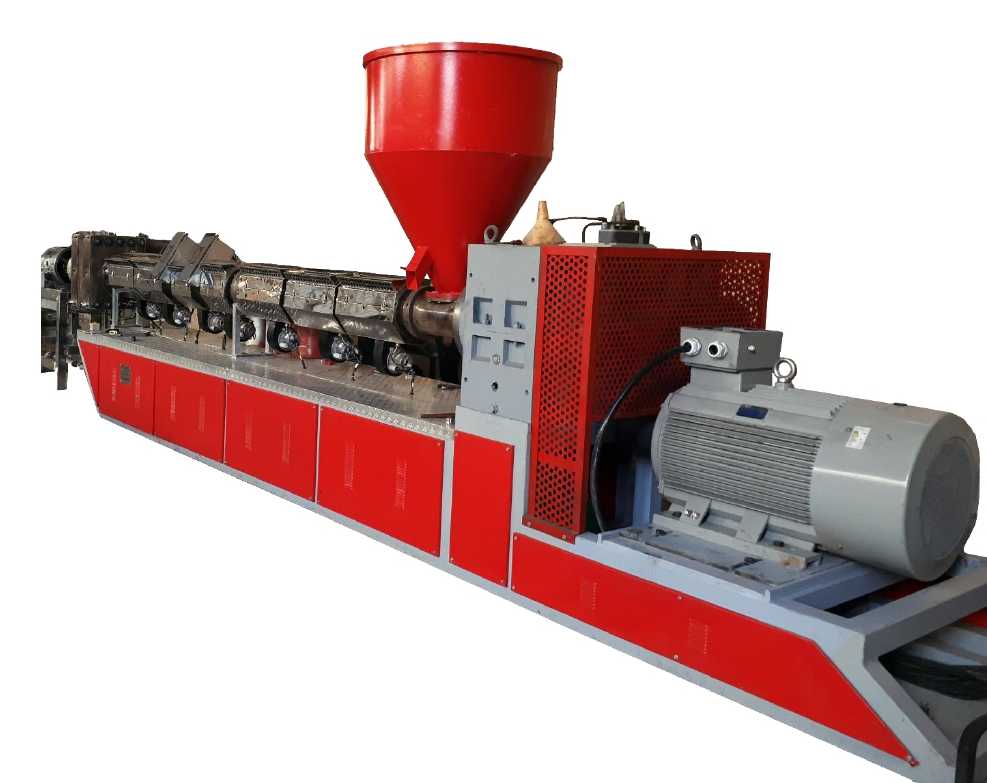فهرست مطالب
ToggleTechnical Specifications of the Hydraulic Filter for Extruder
Cutter electromotor
4 HP 1400 RPM
Inverter
5.5 HP 1400 RPM
centrifuge electromotor
5.5 HP 1400 RPM
Water Pump electromotor
3 HP 1400 RPM
Vibrator
400 Kilograms of Impact
Body
304 Stainless Steel

Key Features of the Water Ring Cutter Machine
- Uniform Granule Sizing
- Precise Material Cutting
The adjustment of water flow speed, cutter rotation speed, and the angle of the cutter blades are key aspects of this machine. If this coordination is disrupted in any way, the produced granules can become too small, too large, or stick together, forming clumps.
Another important point is the design of the water ring’s water outlet channels. If these channels are not designed correctly, it may cause improper water contact with the material outlet plate, leading to a significant decrease in the material’s temperature and creating residual stresses. Additionally, if the channel design is flawed and disrupts the water flow and exit path, it can cause material blockages or improper material interactions, resulting in the formation of material clumps at the water ring exit.
The proper design and reduction of mechanical losses have minimized the pressure on the extruder, thereby increasing the machine’s lifespan and reducing its electricity consumption compared to foreign competitors. Furthermore, the use of corrosion-resistant 304 stainless steel ensures the device does not rust when exposed to hot water, which significantly extends its operational lifespan.
In addition to transporting the granules, the circulating water cools the granules and prevents them from sticking together. Thus, by using high-quality bearings and seals, combined with precision in component manufacturing and adherence to global standards, a cutter is produced that not only offers accuracy and speed but also boasts a long lifespan.

Extruder with Water Ring System
The methods of cutting and shaping materials after the extrusion process have always been of significant interest in the plastic recycling industry. Various methods have been developed to design and implement these processes, as cutting is one of the most crucial stages in the production of granules, ensuring consistent quality and quantity. The cutter must be synchronized with the output speed of the materials to ensure uniform sizing.
In various industries, numerous solutions have been designed and implemented for this stage, including the Water Ring Cutter and the Extruder with Water Ring System. In the following, we will describe some of these methods.

برای سفارش انواع دستگاه اکسترودر از ماشین سازی متین و دریافت مشاوره با ما تماس بگیرید.
Operation of the Water Ring Cutter Machine
The Water Ring Cutter uses pressure and the circulating flow of water inside a cylindrical water chamber to direct the cut materials out of the cutter. However, some might wonder why pressure and a water ring are necessary. The answer is that dry granules tend to clump together. To move the materials to the next stage, they must exit the cutter in a specific flow pattern. Without this, the granules will accumulate and form a pile. This can even occur with low-pressure water, highlighting the importance of water in the cutting process.
The advantage of the Water Ring Cutter becomes apparent when the material output does not immediately encounter circulating water. Instead, as the material is cut, it falls into the water and moves along with it. However, this machine is available in two models for better efficiency and ease of use. It is commonly referred to as the Underwater Cutter. There is a slight difference between these two models, which we will explain below.
Underwater Cutter
The Underwater Cutter is also similar to the Water Ring Cutter in terms of performance. However, the Underwater Cutter is typically used for cutting polypropylene (PP). The small difference with the Underwater Cutter is that the water comes into direct contact with the granules at the initial stage of cutting. In other words, after the material exits the filter, it directly encounters a stream of water under pressure.
